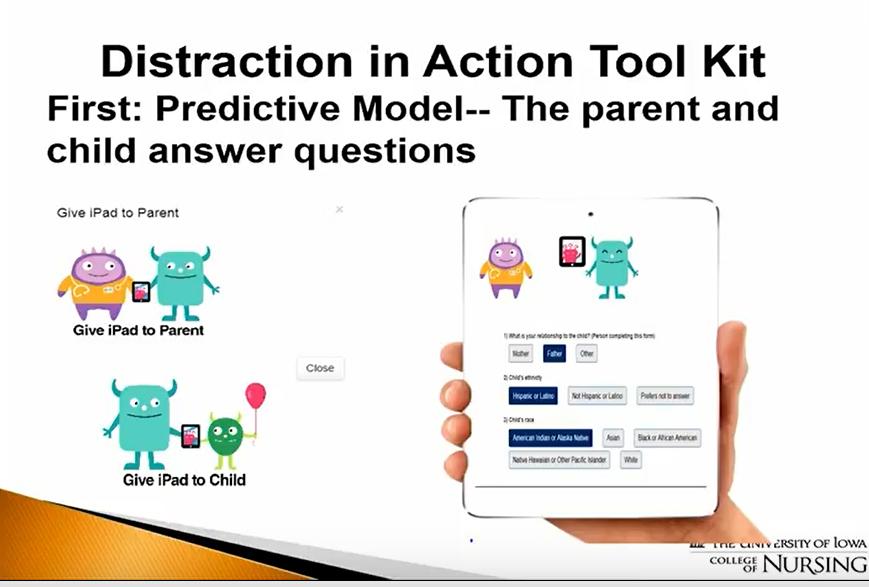Distraction in Action
Tool Helps Children Cope with Painful Procedures
While working as a pediatric nurse, McCarthy saw first-hand how distressing painful medical procedures are to young patients. Such procedures are common, with an average of 9 to 10 of them occurring every day on every child in a pediatric intensive care unit.
McCarthy is a professor and associate dean for research at the University of Iowa College of Nursing, with secondary appointments in the colleges of medicine and public health. The various roles she has had during her career, from staff nurse to nurse practitioner to psychologist to researcher, influenced her work and led her to her passion: identifying evidence-based methods to predict children’s distress during medical procedures and interventions to decrease that distress.
McCarthy discovered during one of her early studies that when families were provided with a package of materials to use during their child’s painful procedure, they only used the distraction tools and not the other materials they were given. Distraction draws children’s attention away from painful stimulus and engages the child in playful activities. McCarthy notes, “When you have divided attention, nothing is as extreme as if you’re totally focused on one thing.”

McCarthy and her team created the Distraction in Action Tool, a web-based tool for families and providers that will identify a child’s risk for distress and provide guidance on how to reduce that distress. The tool kit includes the predictive model, training videos, tips for parents and providers, individualized recommendations and distractors—links to books and games. McCarthy used results of several studies, including a behavioral analysis of what happens during a painful procedure between the parent and the child, to develop the tool kit. Along the way, her team developed a distraction coaching index and discovered genetic differences in how children feel pain when a topical anesthetic is used.
The Distraction in Action Tool is available on the University of Iowa Stead Family Children’s Hospital website, along with information and resources for parents: https://uichildrens.org/distraction-in-action.
The NINR Director’s Lecture Series is designed to bring the nation’s top nurse scientists to NIH to share their work and interests with a transdisciplinary audience. McCarthy’s lecture is available on NINR’s YouTube channel at https://www.youtube.com/watch?v=VmcedkLJ1EI.
